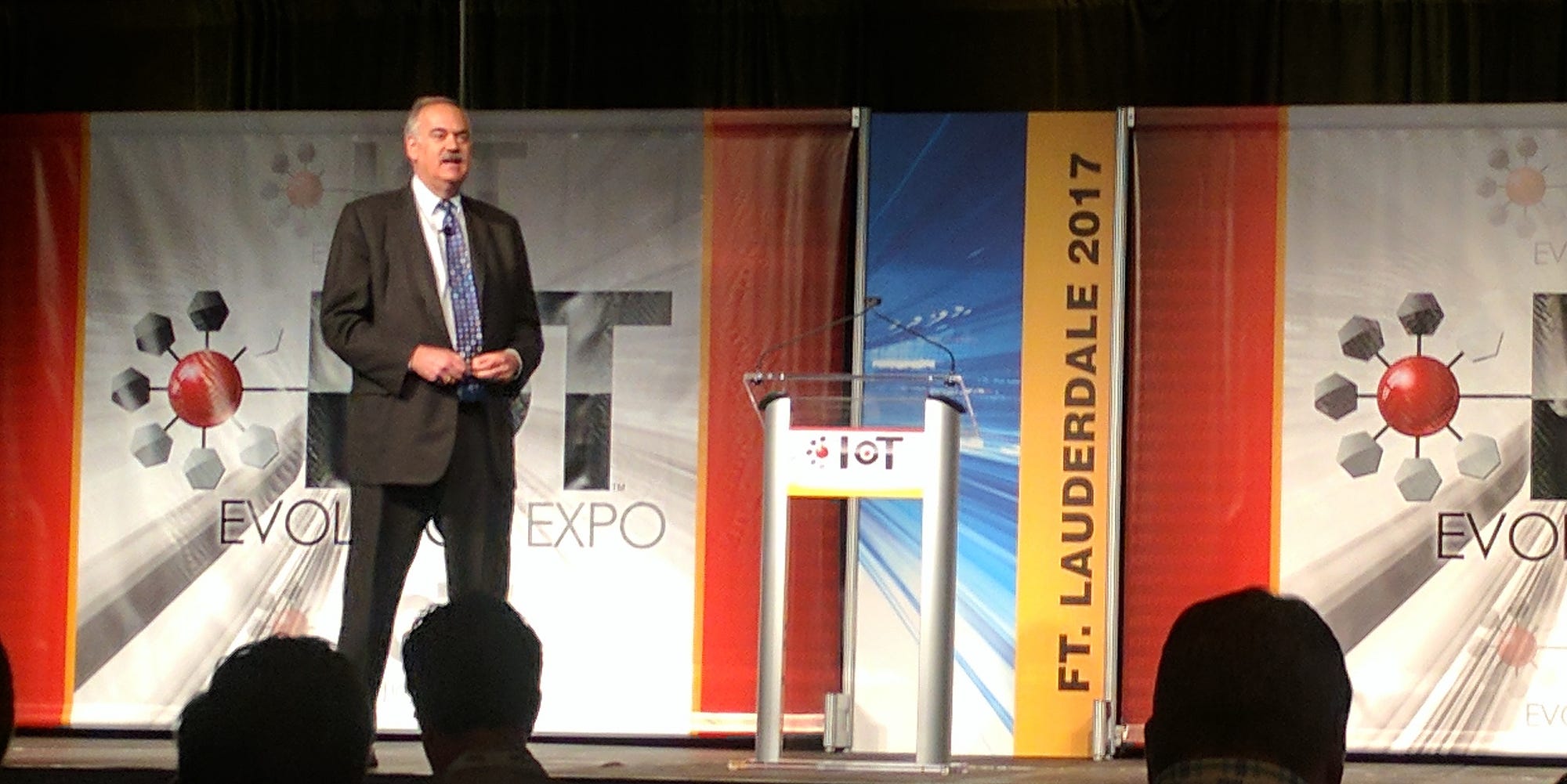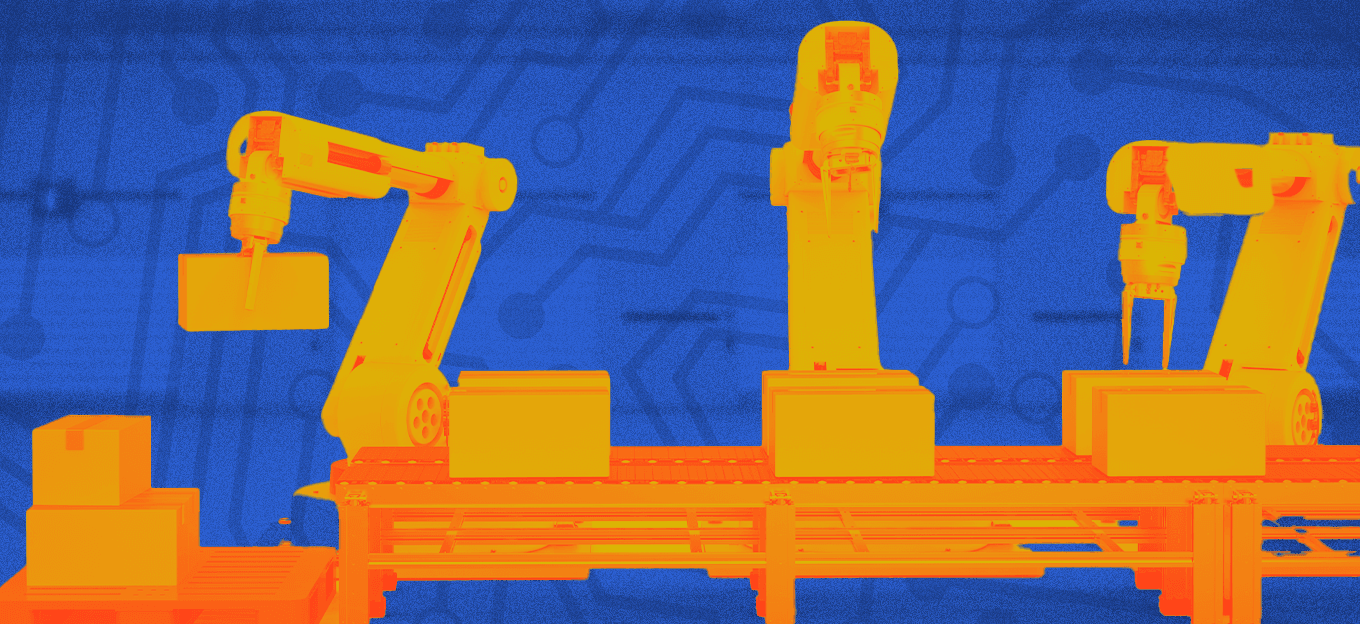How to Start a Successful IoT Journey, Smart Cities, and the Industrial Internet Revolution
How to Start a Successful IoT Journey, Smart Cities, and the Industrial Internet Revolution
- Last Updated: December 2, 2024
Calum McClelland
- Last Updated: December 2, 2024



As is typical at most conferences, the energy level began to fade as we moved through day three of IoT Evolution Expo. Much of the networking had occurred in the first two days, and the opening of the Exhibition Hall pulled attention away from the keynotes, panels, and other presentations. But don’t worry, I still have some great info to share!
Keynote — Starting a Successful IoT Journey
Maciej Kranz of Cisco shared valuable insights for developing and implementing successful IoT projects learned from experience with dozens of customers.
Some takeaways:
- Connected operations are a big opportunity for IoT, and it doesn’t need to be complicated. One example is a company called Nimble from India. Power outages were problematic for ice-cream businesses so generators were installed as backup, but managers weren’t using them. Nimble put temperature sensors in each fridge and connected them to the network, so if the temperature rose in the fridge it automatically alerted the store manager. The manager could then check if the door was open or turn on the generator if there was a power outage. The ROI was massive at 500% in just 12 months.
- Predictive analytics and predictive maintenance are also huge opportunities. Goldcorp is a mining company and therefore has to use huge vehicles to haul dirt/debris out of deep pit mining locations. These vehicles can be prone to breaking down on the single lane winding roads going in and out of the mine. That can mean a cost of $2 million per day in lost productivity until the vehicle is fixed and moved out of the way. It can take weeks to identify and address the issue meaning huge losses for Goldcorp. By integrating sensors into the machines and then using predictive analytics, they could respond to issues faster, sometimes before those issues even occurred. It’s important to note that the analytics weren’t extremely accurate at first (around 80%), but just starting is critical because more data means better accuracy over time.
- Education is going to be extremely important for the Internet of Things. Maciej said that IoT is only 10% technology, 90% is in other areas and one of those areas is finding the right talent. There’s been a lot of talk about manufacturing job loss, but in the US and in Europe there are tens of thousands of jobs not being filled due to lack of qualification. The leading companies are training internally and being creative externally when it comes to building and training talent. The rapid pace of technological change means one-off training sessions are not enough, it needs to be constant evolution and learning for employees. This means investment from companies in training and education. Some companies are even working with educational institutions to provide IoT courses and curricula. That way, for example, the company doesn’t just get a generic data scientist but instead one who can interpret IoT-specific data.

Keynote — Industrial Internet Consortium
Dr. Soley’s keynote was actually given on Day Two, but it’s related to Maciej’s keynote and it’s useful material that I couldn’t squeeze into yesterday’s post, so here you go!
Some takeaways:
- Despite all the hype around consumer IoT products and services, Dr. Soley says that the Industrial Internet is the driver behind the next economic revolution. First we had the industrial revolution, then we had the internet revolution, now they’re combining in the industrial internet revolution.
- And it really is an economic revolution, it’s projected that by 2020, IoT will increase private sector profits 21% and add $19 trillion dollars to the global economy. Also by 2020, IoT product and service providers will generate incremental revenue exceeding $300 billion.
- The barrier in the past has been separation between IT (information technology) and OT (operational technology), but these two areas are converging. This is due to low-cost, powerful technology like cheap sensors/devices and cheap processing power and data storage. Other factors include the number of “things” getting connected, more effective collection, storing, and analyzing data, and machines that are increasingly embedded with sensors and software.
- The three major challenges are interoperability, security, and connectivity.

Panel Discussion: Planning for Smart City Citizens
Moderator (Right):
Carl Ford — CEO Crossfire Media
Panel (Left to Right):
Jonathan Adelstein — President and CEO of The Wireless Infrastructure Association
Mary Beth Hall — Director of Marketing at Verizon Wireless
Peter Murray — Executive Director of Dense Networks
Ron Pascuzzi — SVP Sales & Marketing of Bridgera
Larry Steffann — Cofounder at NC RIoT, General Manager of Wireless Research Center of North Carolina
Jim Stillwell — Director at Cardinal Peak
Some takeaways:
- Larry: “It’s an obstacle of will, not technology”. The panelists agreed that the biggest barrier is the siloed nature of city government. The Internet of Things in inherently about connection and communication, and yet many departments don’t interact. To implement smart city solutions, there needs to be buy-in across departments and constituents, which comes down to a clear understanding of the value proposition.
- There are many benefits to implementing smart city solutions. Heightened public safety, increased efficiency (energy, transportation, etc.) which saves tax dollars and contributes to sustainability, and higher standard of living for citizens which also makes the city more attractive to live in. Different cities are interested in different things, so the long term goals of the city are an essential consideration. But if you’re a business looking to pursue a smart city solution, Ron tells us, “nothing is easier to sell than fear. I would look for safety and where the community is fearful, and figure out how to solve that problem”.
- So what technology will cities use to connect everything? Mary says, “I think there’s a place for [multiple connectivity options]”, which I found particularly interesting given that she works for Verizon. The other panelists agreed. There are so many different Applications with varying needs and requirements that it can’t be just 5G or just Bluetooth or just LPWAN. The important thing is to figure out what is best for the specific application. Interestingly, Larry says that “network deployments should be viewed as a natural resource”. Just as water is essential to a community, networks will be a necessity in life because they’re the means by which communities can connect.
- An interesting final point again came from Larry, who was really was the star of the panel. Aging-in-place solutions are gaining popularity, but they’re rarely a part of the smart city discussion. According to Larry, aging-in-place should be part of the discussion because it will be so impactful on the quality of living for citizens and on healthcare costs. “All these applications are maturing at the same time, the emerging aging-in-place industry is going to explode”.
The Most Comprehensive IoT Newsletter for Enterprises
Showcasing the highest-quality content, resources, news, and insights from the world of the Internet of Things. Subscribe to remain informed and up-to-date.
New Podcast Episode

How Drones and Telecom Enable Aerial IoT
Related Articles



